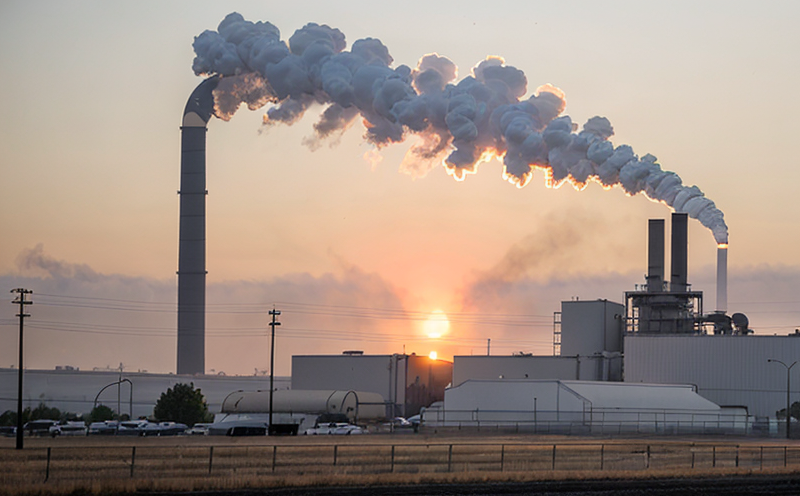ISO 23427 Mercury Emission Testing in Industrial Facilities
The testing of mercury emissions according to ISO 23427 is crucial for industrial facilities aiming to comply with stringent environmental regulations and ensure the safety of their operations. This standard provides a robust framework for measuring atmospheric releases of mercury, which can have severe health impacts on both human populations and ecosystems.
Mercury, a potent neurotoxin, accumulates in the food chain and is highly toxic at low concentrations. The European Union's Air Quality Standards (2004/107/EC) specify maximum permissible levels of mercury emissions to protect public health and the environment. ISO 23427 aligns with these standards, offering a precise method for quantifying mercury emissions from industrial sources.
The testing process involves several critical steps. Firstly, the facility must establish a baseline measurement using appropriate sampling methods. This typically includes placing samplers at strategic locations around the plant to capture representative samples of air containing potential mercury compounds. Sample collection should be conducted under controlled conditions to avoid contamination or loss of volatile mercury species.
Once collected, these samples are transported to the laboratory for analysis. The chosen method often involves cold vapor atomic absorption spectrometry (CV-AAS) or inductively coupled plasma mass spectrometry (ICP-MS), both of which provide high sensitivity and accuracy necessary for detecting trace levels of mercury.
After analysis, the results are compared against ISO 23427 acceptance criteria. These criteria specify permissible limits based on the type of industrial activity and geographical location. Compliance with these limits ensures that the facility does not contribute disproportionately to regional air pollution or exceed local regulatory thresholds.
The importance of this testing cannot be overstated. Non-compliance can lead to severe penalties, including fines, operational shutdowns, and reputational damage. Moreover, failing to meet emission standards can have long-term environmental consequences, affecting biodiversity and human health.
- Why Choose This Test: It ensures compliance with international regulations, protects public health, and minimizes environmental impact.
- Quality and Reliability Assurance: Rigorous adherence to ISO 23427 guarantees accurate results and consistent quality across multiple tests.
In conclusion, implementing ISO 23427 mercury emission testing is not just a regulatory requirement; it is an essential practice for responsible industrial operations. By adhering to this standard, facilities can safeguard their reputation, maintain operational continuity, and contribute positively to environmental sustainability.
Frequently Asked Questions
Eurolab Advantages
At Eurolab, we offer comprehensive ISO 23427 testing services tailored to meet the unique needs of industrial facilities. Our team comprises experienced professionals with expertise in environmental analysis, ensuring accurate and reliable results.
- Expertise: Our staff are trained in the latest methodologies and technologies for mercury emission testing.
- Accreditation: Eurolab is ISO/IEC 17025 accredited, guaranteeing the highest standards of laboratory performance.
- Comprehensive Services: We provide a full range of testing services from sample collection to final analysis and reporting.
We understand that compliance with environmental regulations is critical for your facility's operations. Eurolab offers flexible service packages designed to fit your budget and schedule, ensuring minimal disruption to your business activities.
Why Choose This Test
- Compliance: Ensures adherence to international standards and local regulations.
- Health Protection: Protects public health by minimizing exposure to harmful mercury emissions.
- Environmental Impact Reduction: Minimizes the environmental impact of industrial activities, contributing to sustainable practices.
By choosing ISO 23427 testing, you demonstrate a commitment to responsible environmental stewardship and regulatory compliance. This proactive approach can enhance your facility's reputation and reduce operational risks.
Quality and Reliability Assurance
- Certification: Eurolab adheres strictly to ISO/IEC 17025 standards, ensuring the highest quality of testing services.
- Methodology: Our tests are conducted using the most advanced and accurate methods available, including cold vapor atomic absorption spectrometry (CV-AAS) and inductively coupled plasma mass spectrometry (ICP-MS).
The reliability of our testing results is further enhanced by stringent quality control measures and regular calibration of equipment. Our commitment to accuracy and consistency ensures that you receive precise data every time.





